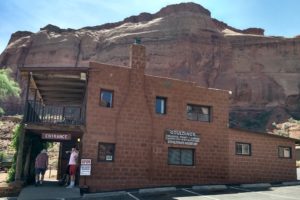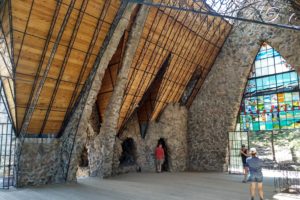Yesterday was such an adventure after breakfast out (part 1 of our Keweenaw Peninsula adventure). We had 5 days to spend in the area and lots of possible places to go. We planned out our days and then started checking websites for times and days that they’d be open—and we rescheduled our exploring because some places were closing in just a few days!
Such a place was the Houghton County Historical Museum that opened at noon. We got there at 11:50 and saw a closed sign. We went to the grocery store across the street to do a little shopping, thinking that the museum would be opening soon.
A couple of cars and trucks were in the parking lot when we drove in, and an older man, George West, came out of a side building to greet us.

Yes, the museum was closed completely because they had just had a huge storm that had flooded one of the main buildings and its items had been moved to other buildings in the complex. But George was willing to unlock the main museum’s 3-story building and let us walk through on our own. What a nice man! He’s on the board of the museum and loves what they’re doing to preserve history.
The museum is the site of a copper mill that started operating in the mid-1800s. Copper ore from a mine was brought by train to be smashed by large “stamps” that separated the rock from the copper. We don’t know yet what happened to the copper, but the leftover rock called “stamp sand” was dumped into the local lake. A woman from the California gold mines had discovered in the 1800s that she could get gold when she washed her husband’s clothes. The copper mill owners tried her approach. They built large round barrels, put leftover rock in it, and filled it with water, detergent, and oil. Then they added air from the bottom, and the soap bubbles came to the top carrying bits of copper. The workers scooped up the bubbles, let them deflate, and then collected the copper. Almost all of the rock from the lake was cleaned this way and removed. Mill workers collected more copper using this method than from the original stamping. Amazing!
Here are some pictures of the museum that we found interesting.










